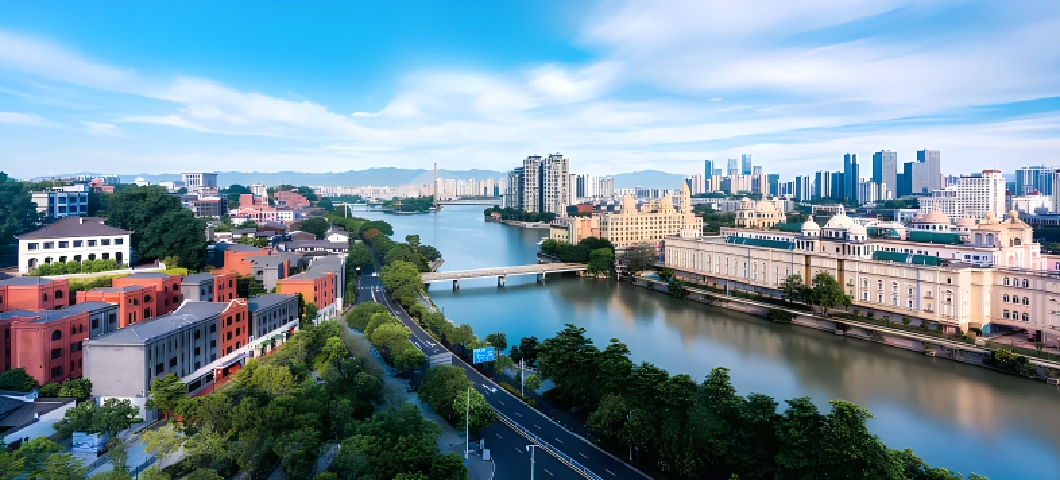
Introduction of Fuzhou
Fuzhou, as the capital city of Fujian Province, locates on the southeast coast of China. Fuzhou is a city with beautiful mountains, clear waters, beautiful ecological endowments, a long history, and a gathering of talents, for which it is known as a Land of Blessings.
Fuzhou has been endowed with a good ecological environment and rich natural resources. The optimal temperature and warm and humid weather in Fuzhou have led to the wide plantation of banyan trees which are evergreen with lush branches and leaves all year round. Legend has it that the prefect named Zhang Boyu advocated "organizing each household to plant banyan trees" during the Northern Song Dynasty, which made it possible that "Fuzhou city is full of green shades, and no umbrella is necessary in the summer", for which Fuzhou was named "the city of banyans". According to historical records, during the Five Dynasties Period, Wang Shenzhi the King of the Min Kingdom expanded the scope of the Fuzhou City, and enclosed the beautiful sceneries of the Yushan Hill, Wushan Hill and Pingshan Hill in the city to form a unique pattern of "hills in the city and the city surrounded by mountains", for which Fuzhou is also known as the "Three Hills (Sanshan)". Minjiang River, the largest river in Fujian Province and the mother river of Fuzhou City, runs through the city like a green belt. This is why the title of "Three Hills and One River" has become the main symbol of the city. Today, Fuzhou is one of the cities with the best air quality and the greenest environment in China. It is also the most representative city of hot springs in China, and the urban districts contain extremely rich hot spring resources for tourism development. "Ecological and Green" has become a gorgeous name card of Fuzhou City.


